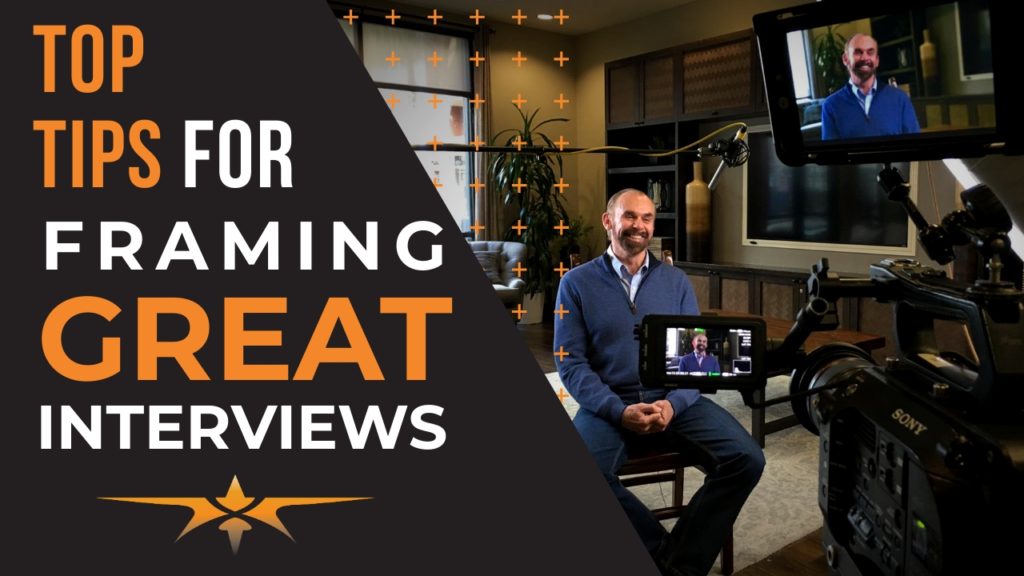
Top Tips for Framing Great Interviews
Are you trying to improve your interview filming skills? We’re providing these top tips for framing great interviews to help you prepare for a quality interview video. Whether it’s your first time filming an interview, or you’re a seasoned pro–these tips will help you in framing an interview and getting the most out of your footage.

Tip 1: Prepare Your Camera Setup
You may think, how is this a tip? My camera setup is the same whether I am filming an interview or a dramatic scene. However, you couldn’t be more wrong. You may get away with a single shot production for some things, but when filming an interview, it’s almost always best to include two or even three camera shots when possible.
Your main camera should be the primary concern. Set up the other cameras to capture a second or third angle for additional use in editing.
Tip 2: Frame Your Shot
The steps you take now to frame your shot will ensure image quality as you film. Decide how you want to frame the shot first. Do you want the project to look or feel a certain way? How much information do you want the shot to convey?
When framing the shot, consider the following:
- Consider focal length.
- Adjust focal length to match – a short focal length will provide a wide view field while a long focal length will narrow the field.
- Adjust how you want your subject to appear in the space.
- Set your focus. Depending on the frame and focal length, adjust for depth of field.

Tip 3: Make Background Interesting and Not Flat
The worst thing you can do is film your subject on a flat background. Part of your focal length should include determining the steps you can take to make the background interesting to the audience. If shooting green screen or against a solid color wall, you don’t necessarily have to worry much about the background. Otherwise, the background is a huge part of framing an interview properly.
If you have a wide depth of field, consider using the rule of thirds to your advantage. Doing so will help the background to appear organized and interesting to the viewer.
If you’re working with a shallow depth of field, consider blurring the background out completely to reduce the business. Adjust the light, color and shapes to increase interest.
Tip 4: Pick an Angle
The filming angle that you choose will depend on your interview needs and your setup. Most interviews are at a slight angle to reduce a flat appearance of the subject. If your subject is NOT reading from a teleprompter, you can likely shift the camera slightly to the side from 15-45 degrees to get maximum use of your viewable area.
The goal here is to pick an angle that shows as much of your subject as possible while keeping them comfortable in the shot. You can shift a few feet left or right to produce a shot that is angled just right.


